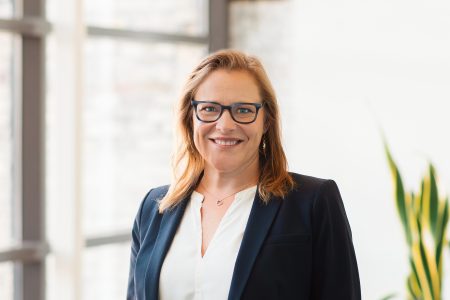Developing a Strong Data Governance Program in Higher Education

Data is only valuable when it’s accessible to the right people at the right time. Rhonda Small guides us through best practices in managing crucial data governance programs for educational institutions.
Sometimes it’s hard to explain to people what I do. That I can take the countless data points an organization creates every day and turn them into useful, actionable information. And I can even help automate it so that the information is accessible to the people who need it, when they need it. The data can be anything from classroom capacity to energy use to accessibility features. Collecting, collating and synthesizing this information—and presenting is as a user-friendly dashboard—can save time, money and even lives.
That may sound like a strong statement, and it is, but I’ve seen it happen. And the key is having a strong data collection and data governance program.
What is Data Governance?
Simply put, data governance is the practice of identifying, organizing and managing data across an organization. It provides standards and procedures to keep data readily available and usable with data protection to ensure data privacy and data integrity.
Our process sits on four pillars:
- Identify Unique User Cases
- Quantify Value
- Improve Data Capabilities
- Develop Scalable Delivery Model
First, we figure out who needs the data, what they need to know and why. Then we quantify the value it will bring to the organization—it is absolutely crucial to get buy-in with stakeholders by connecting revenue, cost and risk to data governance. Communication is a major part of making the program viable in the long run. It illustrates to the people maintaining the data exactly what it’s doing for them. At that point, we look at how we can improve data capabilities, refine data points, and consider what else we might add. After all of that, we put together a scalable model so that the program can work across the organization and grow as necessary.
These pillars work in every conceivable case and for every organization, big or small. But we put it to the test at the University of Texas—San Antonio (UTSA), where we had a collaborative, innovative client with the vision to make a strong data governance program possible.
A Data Governance Model for Higher Education
At the University of Texas San Antonio (UTSA), we talked a lot about their history and their future. Their buildings had grown by 27% and their square footage by 20% since 2012. By 2028, they expect their student population to grow by 10,000. Clearly, they have significant data coming in on a daily basis. It was also clear to everyone on the team that their data needs were going to grow substantially. The data would need to be easy to collect, easy to access and put into a relevant format so it could be used to make decisions.
One driver behind this particular data governance project is the number of surveys and grants that are either legally required or that provide government funding for the university based on information about their research spaces and facilities. The university stands to gain millions of dollars in funding by completing these applications accurately. When they were completed manually, the data collected was cumbersome and only covered the exact information needed. A data governance program makes it so these tasks are no longer manual. Staff have a much wider array of information that can help them streamline reporting and reduce major risks.
Time and Risk Reduced
In terms of time, UTSA staff were previously spending 60 hours per year walking floors, 10 hours per month doing data maintenance and another 120 hours a year maintaining the data. They can now all but eliminate these hours while maintaining their information for grants and surveys, which provide funds to enhance the campus and attract new students.
At UTSA, through our project process, they found a plethora of information that wasn’t being collected about their labs, classrooms and offices. That includes things like layout, whether the labs are flat or tiered rooms, whether they have servers or racks, and even what kind of furniture and AV equipment is in the room. From an accessibility standpoint, this is crucial information to make sure they are accommodating all their staff and students. And from a safety standpoint, they now collect data on dangerous chemicals, bio safety levels and pressure differentials. This is the kind of information that facilities managers need to know and it really can save lives.
The Brass Tacks of Creating a Scalable Model for Data Governance
So, how do we collect this data? At one point, there were up to 50 information fields for some of the labs at UTSA. The information was collected in a database that helped control the content by limiting the fields. It made entering all this data more user-friendly. That data now matches the format FM:Systems software requirements so that UTSA to maintain the data in the long term. And that is where RSP’s Facility Information experts came in with our best practices for documenting workflow, knowing where the data is, who uses it, and how to do ongoing maintenance.
Each type of room has customized fields (classrooms versus labs versus offices). We have facilities management admins, higher education survey respondents and others collecting and accessing the data. Each group had different needs. We created a workflow so that everyone involved would understand the end result. Then, we went back and asked again if they truly understood the process and the data they were being asked to input. That is how we created a scalable model that can be used in every building on campus and, really, any building anywhere.
Maintenance and Communication are Key
Continued engagement is one of the most important elements of a strong data governance program. Data collection is not something that happens once a year. The facilities team can (and should!) access and update information as things change to maintain accuracy and engagement. And they can reiterate to others the importance of the data and the value of the system—the reduced risk, the time saved and the financial benefit.
The next steps are to look at the ways the organization and business needs are changing. Today, the facilities team may only need to know the size of a particular room. In the future, they may want to know the cost per square foot or other information. They can now revisit and revise their data governance system and process as needed. And that flexibility is one of the greatest values data governance can bring to higher education institutions, as well as corporate and healthcare organizations.






